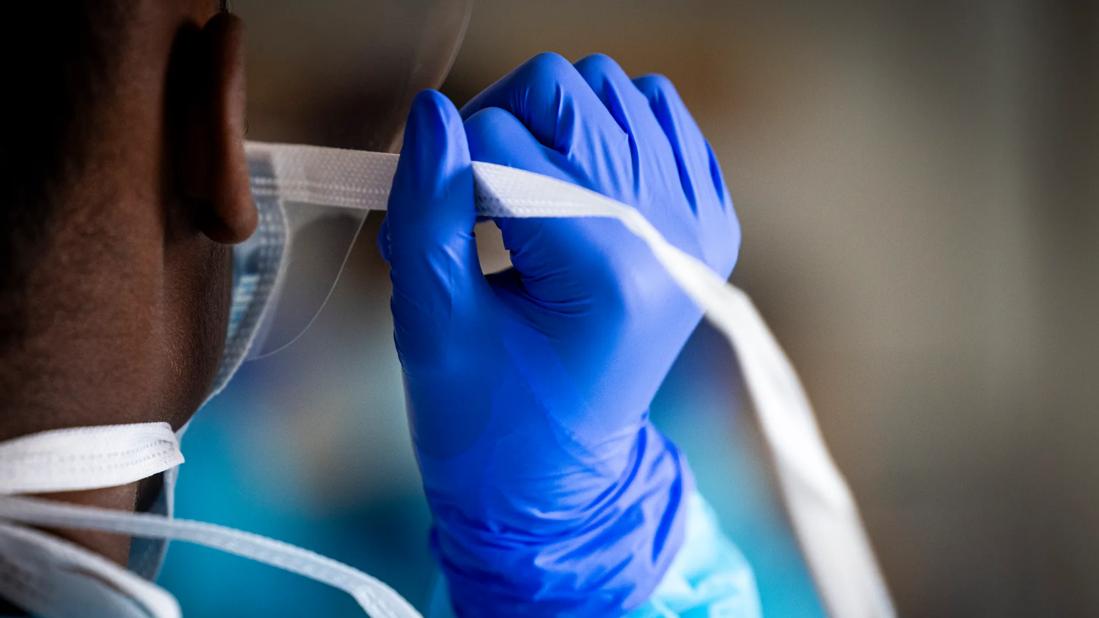A dermatologist gives advice on skin irritation from masks

“Maskne” is the new term that was coined during the pandemic to describe acne under facial masks. It is at an all-time high with the general public and healthcare providers.
Advertisement
Cleveland Clinic is a non-profit academic medical center. Advertising on our site helps support our mission. We do not endorse non-Cleveland Clinic products or services. Policy
So what causes it? This type of acne is called acne mechanica.
“This term refers to skin irritation from excess pressure, heat and rubbing against the skin caused by a mask,” says Cleveland Clinic dermatologist Shilpi Khetarpal, MD. “When the skin is constantly rubbed it becomes rough and forms acne-like bumps. Masks can worsen existing skin problems or cause new ones. Additionally, hot, humid weather can create the perfect storm for bacteria, causing acne to grow on the skin.”
Dr. Khetarpal recommends these simple steps to improve skin health under your mask:
“If you do end up with acne despite these simple measures, you can try some over-the-counter remedies first,” says Dr. Khetarpal. “But keep in mind, all products that treat acne can be drying and irritating. So start with one medicated product at a time. Ingredients in these products that can treat acne include salicylic acid, adapalene, retinol and benzoyl peroxide.”
Advertisement
Masks and other personal protective equipment can also cause pressure injuries on the face and head. Areas at risk for pressure injury development include the forehead, cheek bones, bridge of the nose and behind the ears. Pressure injuries may appear as non-blanchable reddened areas on the face, blisters, and/or open wounds. Cleveland Clinic’s Wound Care team recommends using some type of transparent dressing each day to protect at-risk skin and/or open wounds. They recommend cutting squares, rectangles or circles and applying the dressings where the mask sits over the irritated facial prominences. Note that the dressing adheres best on clean dry skin. Leave in place for entire shift or reapply as needed, and gently remove at the end of the day.
Dr. Khetarpal says contact dermatitis is another mask issue. This is an allergic reaction to any of the components of a mask, such as dyes, rubber and fabrics. This presents as a rash and can be very itchy. If this occurs, using a mild topical steroid like hydrocortisone can be helpful. Rosacea also can be flared by the heat and humidity under the mask.
If your skin issues persist despite trying these steps, it is important to seek medical attention of a dermatologist for additional treatment options.
Advertisement
Advertisement

Patients report improved sense of smell and taste

Clinicians who are accustomed to uncertainty can do well by patients

Unique skin changes can occur after infection or vaccine

Cleveland Clinic analysis suggests that obtaining care for the virus might reveal a previously undiagnosed condition

As the pandemic evolves, rheumatologists must continue to be mindful of most vulnerable patients

Early results suggest positive outcomes from COVID-19 PrEP treatment

Could the virus have caused the condition or triggered previously undiagnosed disease?

Five categories of cutaneous abnormalities are associated with COVID-19